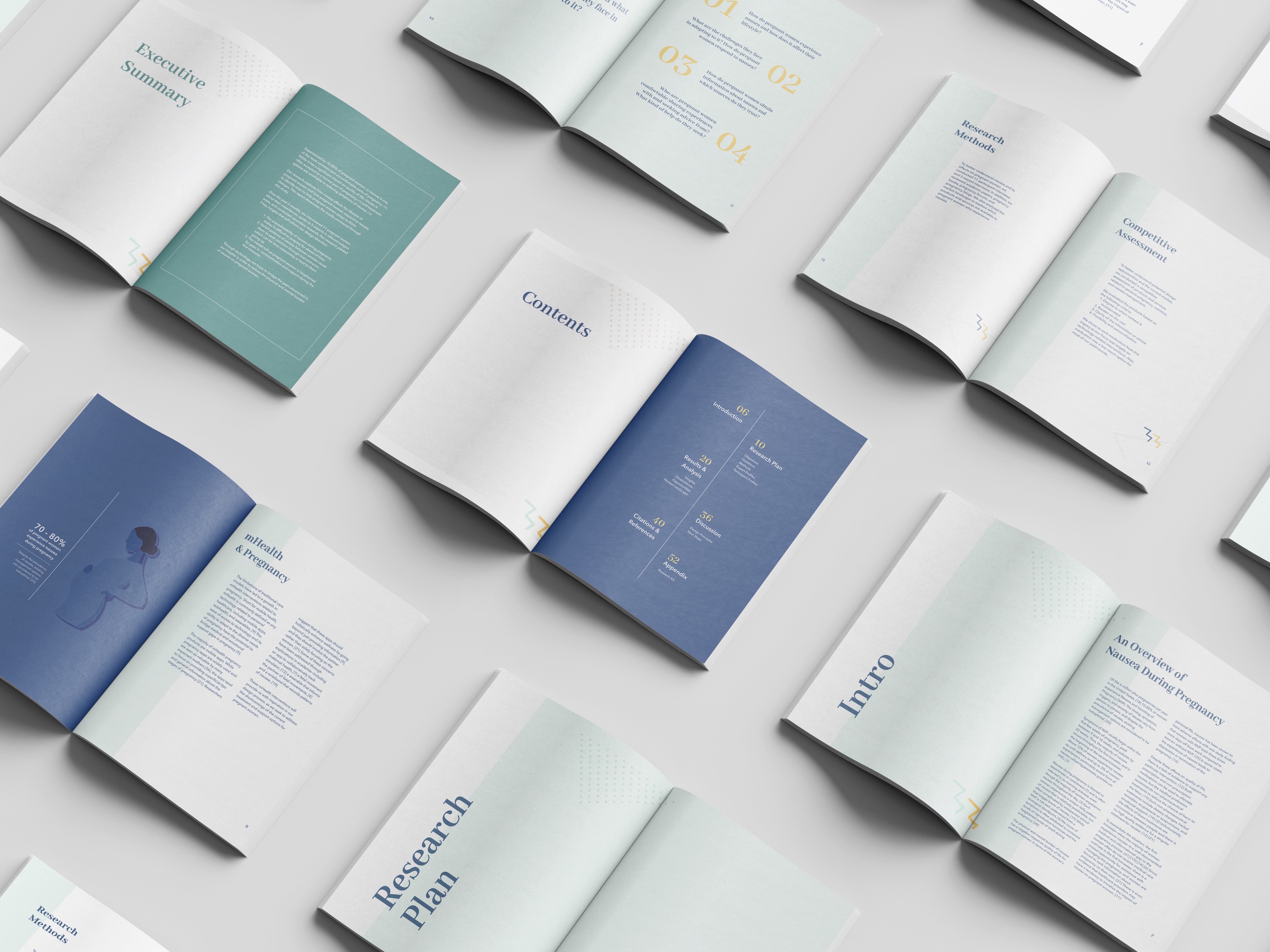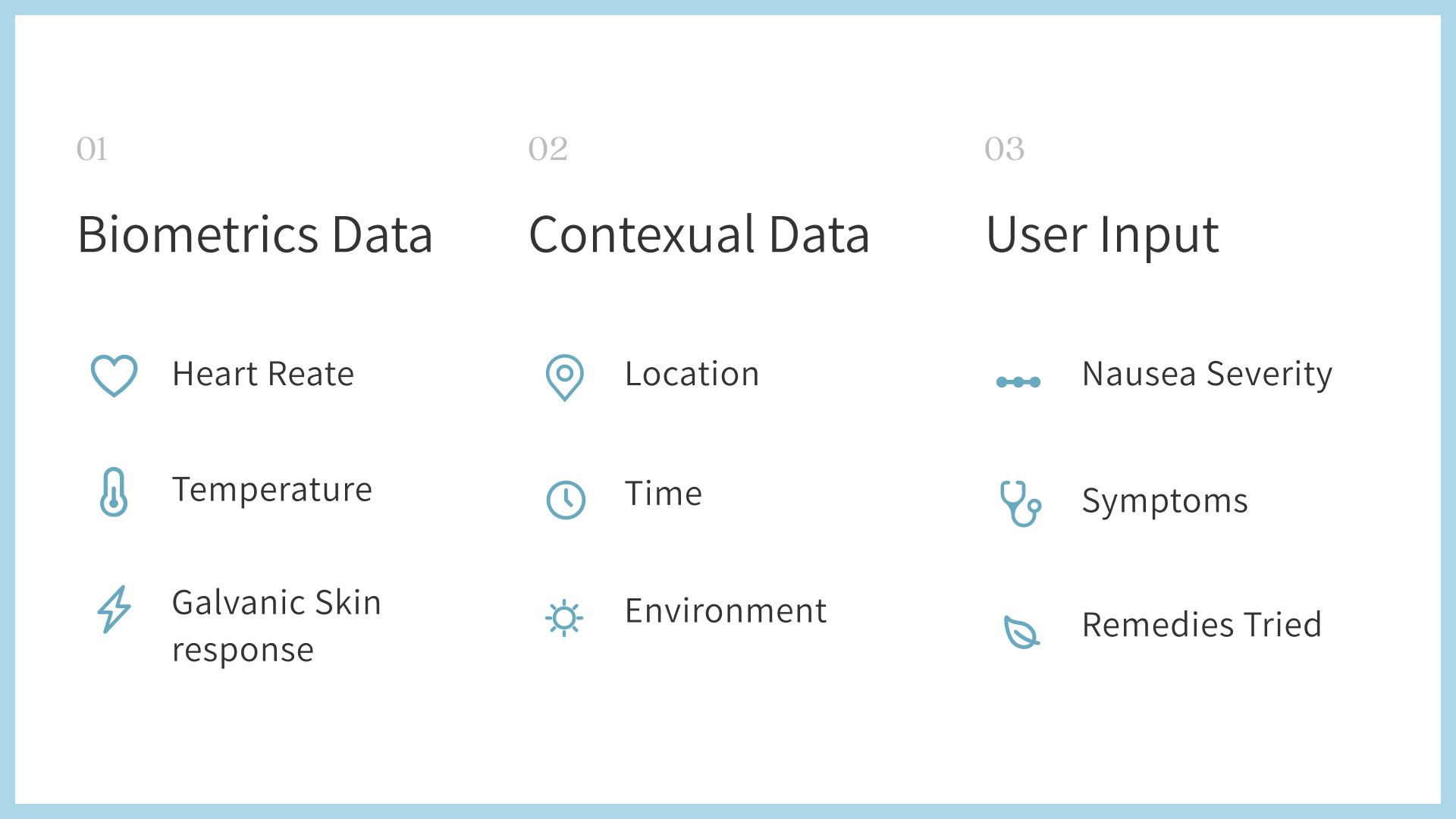Role
Interaction Design
UI Design
Qualitative research
Research Synthesis
Storyboarding Usability Testing
Team
Interaction Design
UI Design
Qualitative research
Research Synthesis
Storyboarding Usability Testing
Team
Lia is a machine-learning-driven design concept that helps pregnant people manage nausea.
It consists of a wearable that detects nausea and an app that surfaces a nausea pattern and recommends tailored remedies.
In this 6-month collaborative capstone design project, I led the interaction design, UI design, mapped out the product ecosystem, and conducted research synthesis.
01 Context
Nausea during pregnancy is an unaddressed pain point in healthcare.
Impacting a large population.
Around 5 million people experience nausea during pregnancy every year.
Overlooked by healthcare providers.
Nausea during pregnancy can lead to depression or termination of the pregnancy, but its impact on the quality of life is often overlooked by healthcare providers.
There is no cure.
Nausea can feel like a black box. Finding relief is often unreliable and discouraging.

Nausea is attributed to rising hormone levels and is most prevalent during the first trimester, but for some, it can last until the end of their pregnancy.
02 Response
Lia helps pregnant people ...

Reduce the tracking burden
by detecting nausea onsets based on biometrics and contextual data
Understand personal nausea pattern
and how it develops compares to other people
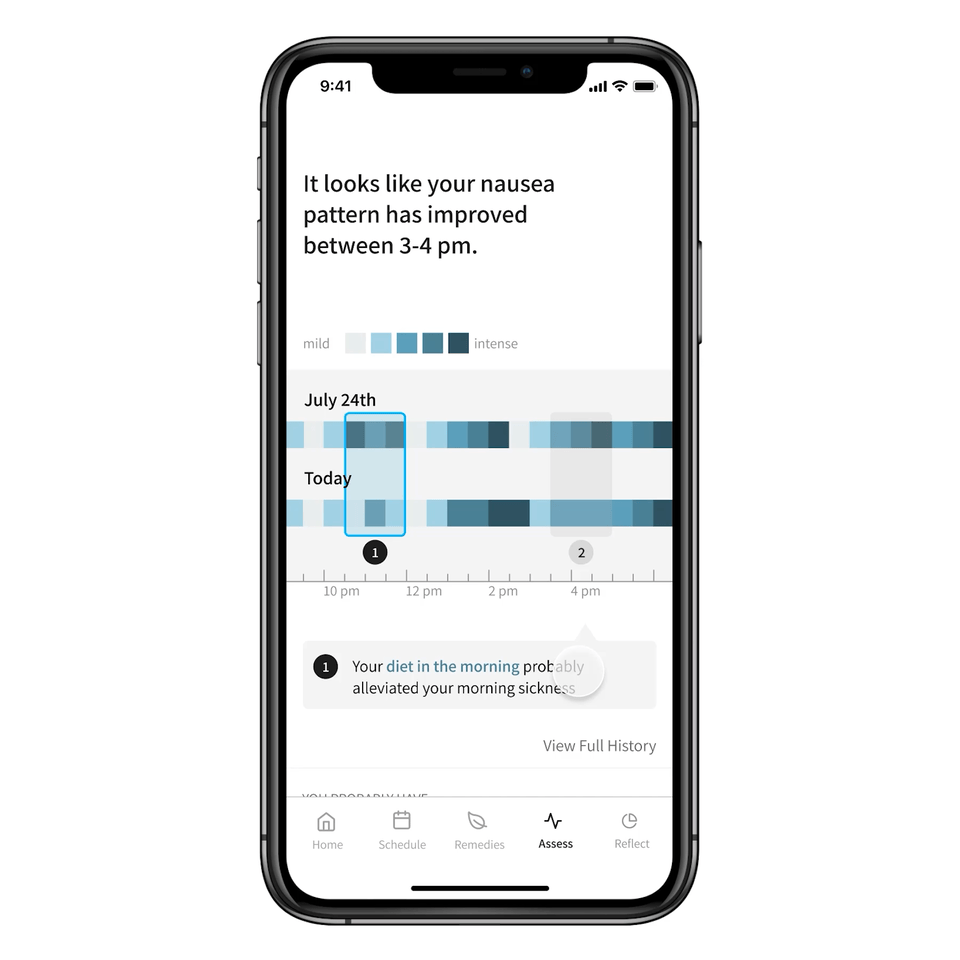
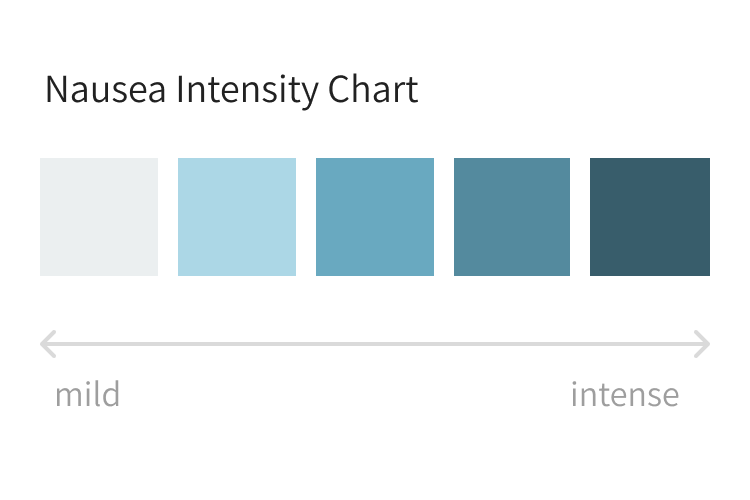
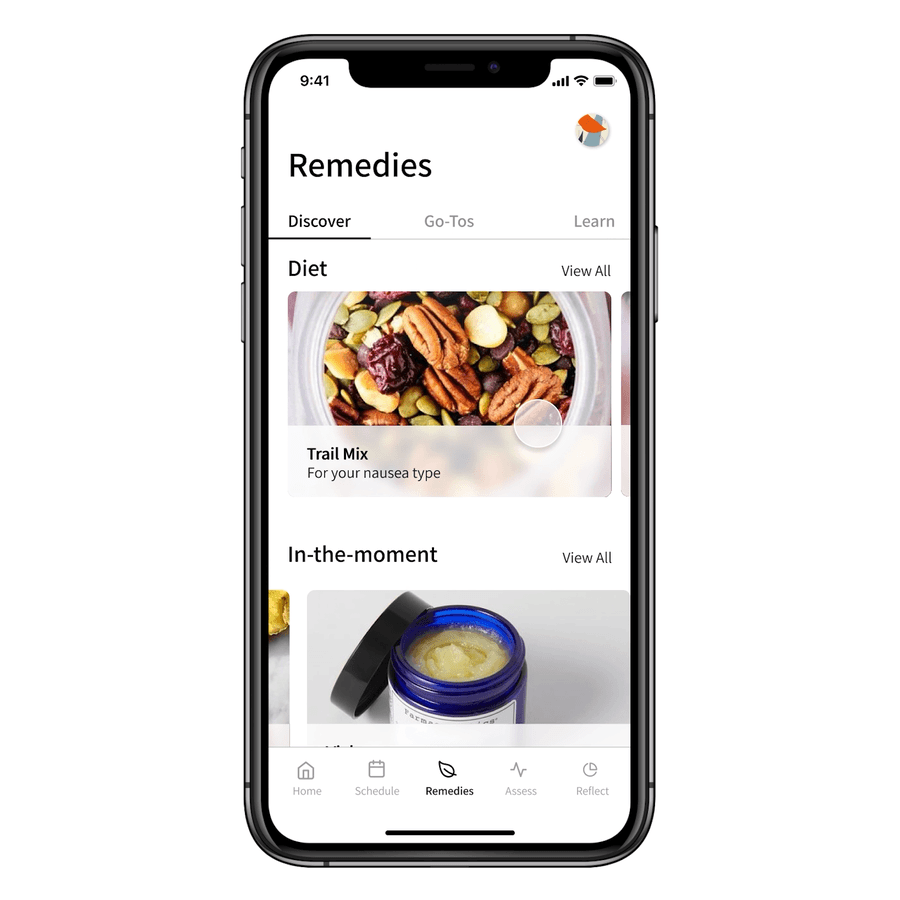
Discover personalized remedies
that are more likely to be effective
Plan the day
with the ups and downs of their nausea pattern in mind

03 Research
Started with ambiguity, we landed the problem space through research.
Our shared interest in data and human agency led us down the path of personal health informatics and self-tracking. From there, we drive design through research.
7 SME Interviews
We narrowed down our target population to pregnant people by interviewing 7 subject-matter experts in the field of women’s health, data, and personal health informatics.

11 Participant Interviews
Based on 11 interviews with pregnant women aged 21-35 in the US, we identified nausea as a key challenge that pregnant people face.

Due to the COVID-19, our research methods were optimized to be fully remote as we could not safely do this in person.
17 Competitors
We conducted competitive assessments in both the market and academic research to define the niche market in the pregnancy space in the next 5 years.

4 Rounds of Data Synthesis
Supporting our qualitative understanding with academic papers, pregnancy forums, and pregnancy books, we went through 4 rounds of research synthesis to generate 3 key design insights.
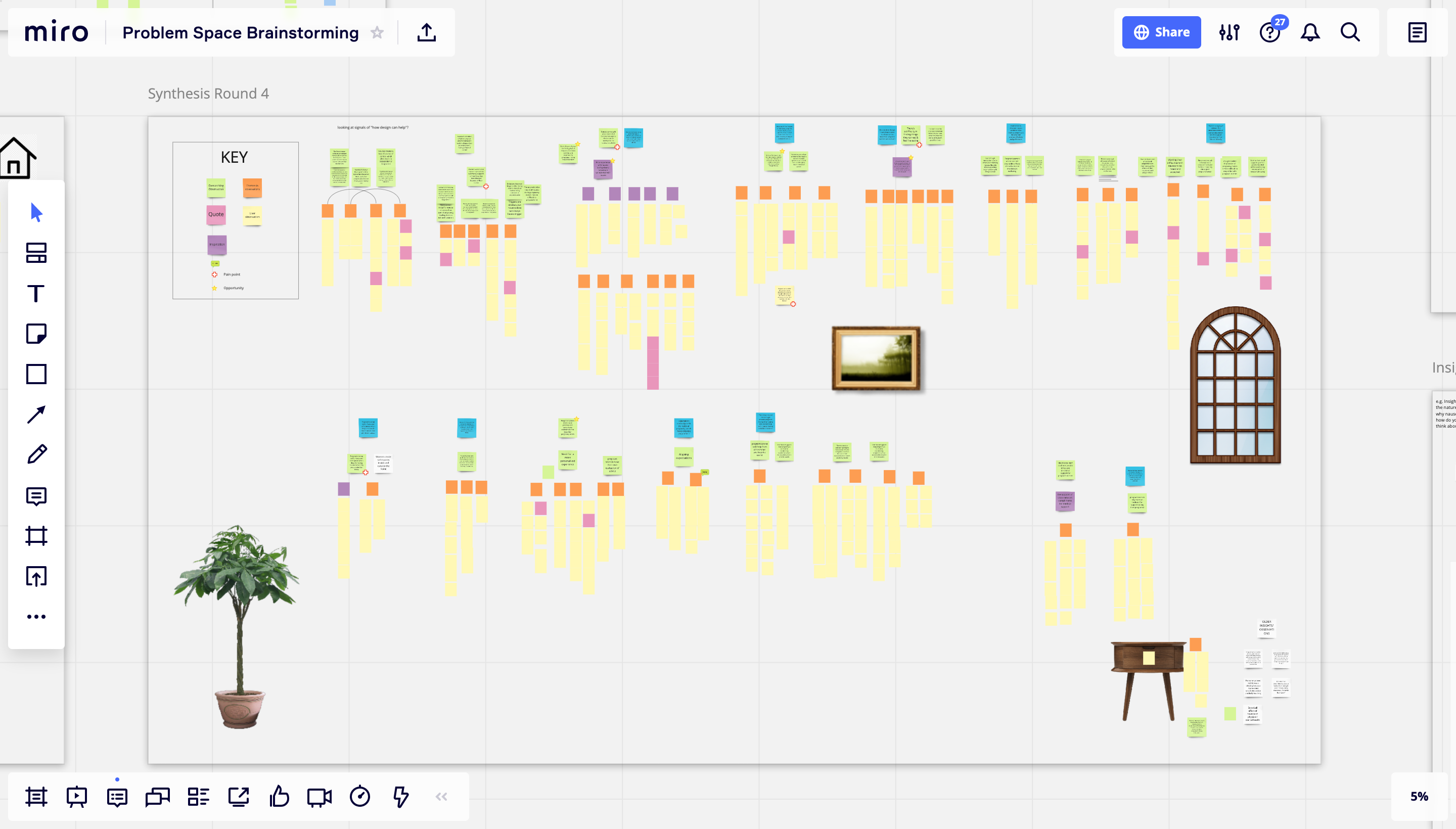



Swipe right to see the progression of data synthesis.
3 key insights
insight 01
Nausea is unpredictable
This makes nausea during pregnancy difficult to prepare for ahead of time
Nausea is unpredictable
This makes nausea during pregnancy difficult to prepare for ahead of time
insight 02
Finding relief is defeating
Varied patterns of nausea between women cause them to seek solutions through trial-and-error, which can be time-consuming or lead to them giving up.
Finding relief is defeating
Varied patterns of nausea between women cause them to seek solutions through trial-and-error, which can be time-consuming or lead to them giving up.
insight 03
The mental toll on pregnant women is heightened by gaps in communication and support during the first trimester.
There are gaps in support
The mental toll on pregnant women is heightened by gaps in communication and support during the first trimester.
04 Design
Design Journey
Make Lia Possible
I led the technology research and ideation sessions to brainstorm ways to support pregnant women manage nausea.
Make Lia Possible
I led the technology research and ideation sessions to brainstorm ways to support pregnant women manage nausea.
ML for pattern recognition
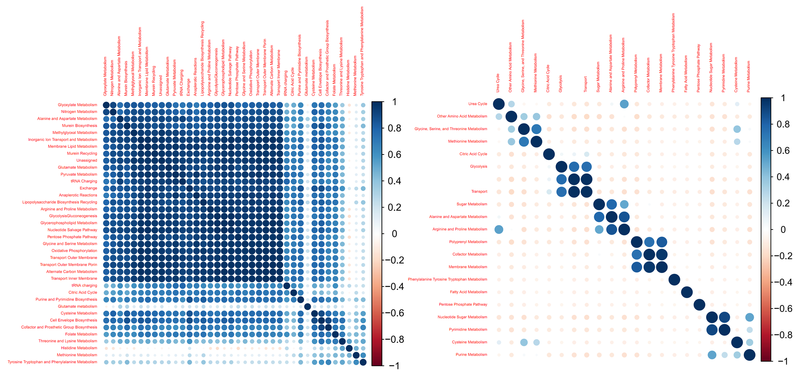 Image from Wikipedia.
Image from Wikipedia.Machine learning connects data points from individuals to a broader population. The nausea pattern generated from community data could help pregnant women understand and respond to their personal nausea experience.
Technology in the next 3-5 years
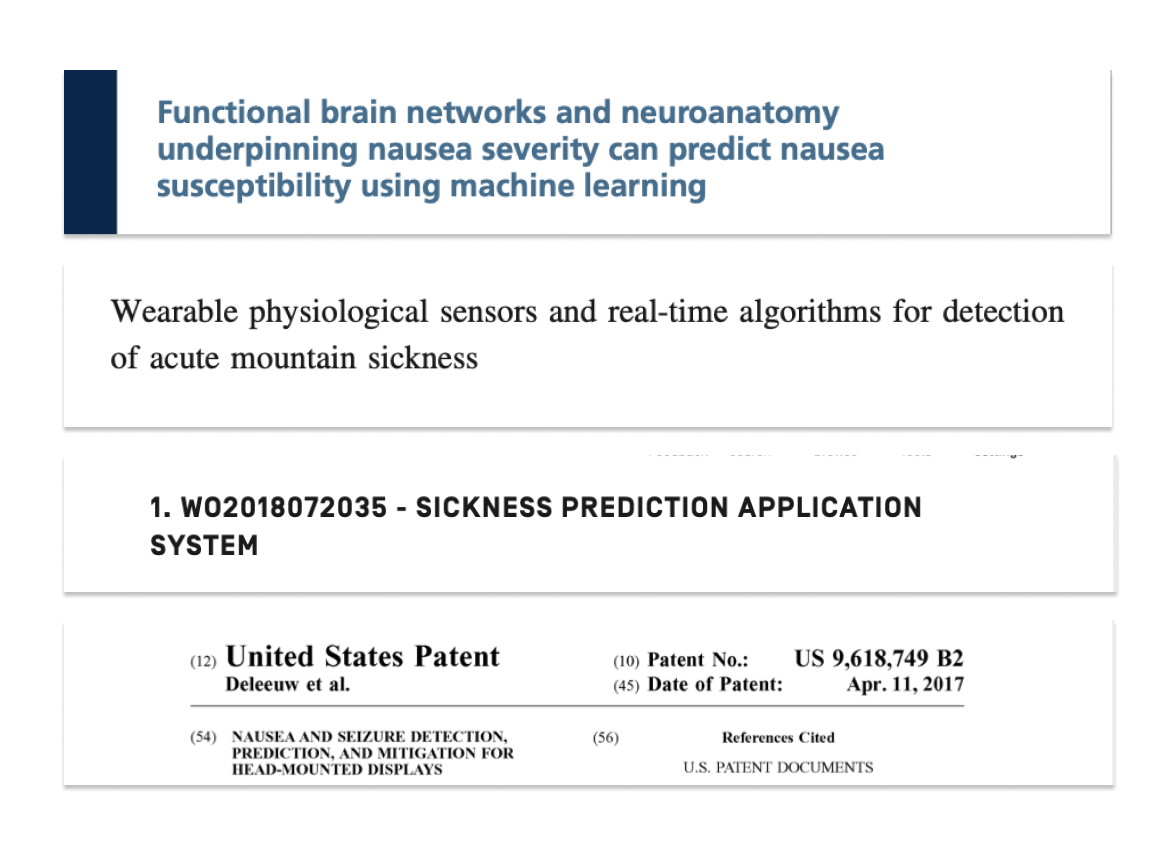
We identified 4 research papers and patents that outlined how biometrics, combined with machine learning, could be used to detect nausea and other related conditions.
Data collection
![]()
There are 3 key types of biometric data that these papers utilize for nausea detection: heart rate, temperature, and galvanic skin response.
Lia combines the biometrics data with contextual data gathered through the app and data that the user inputs to construct a complete picture of the user’s nausea.
Wearable Design
I lead the brainstorm session to ideate different forms and locations for the wearable.
3 down-selection criteria:
1. Effective Detection
2. Discrete
3. Non-obtrusive
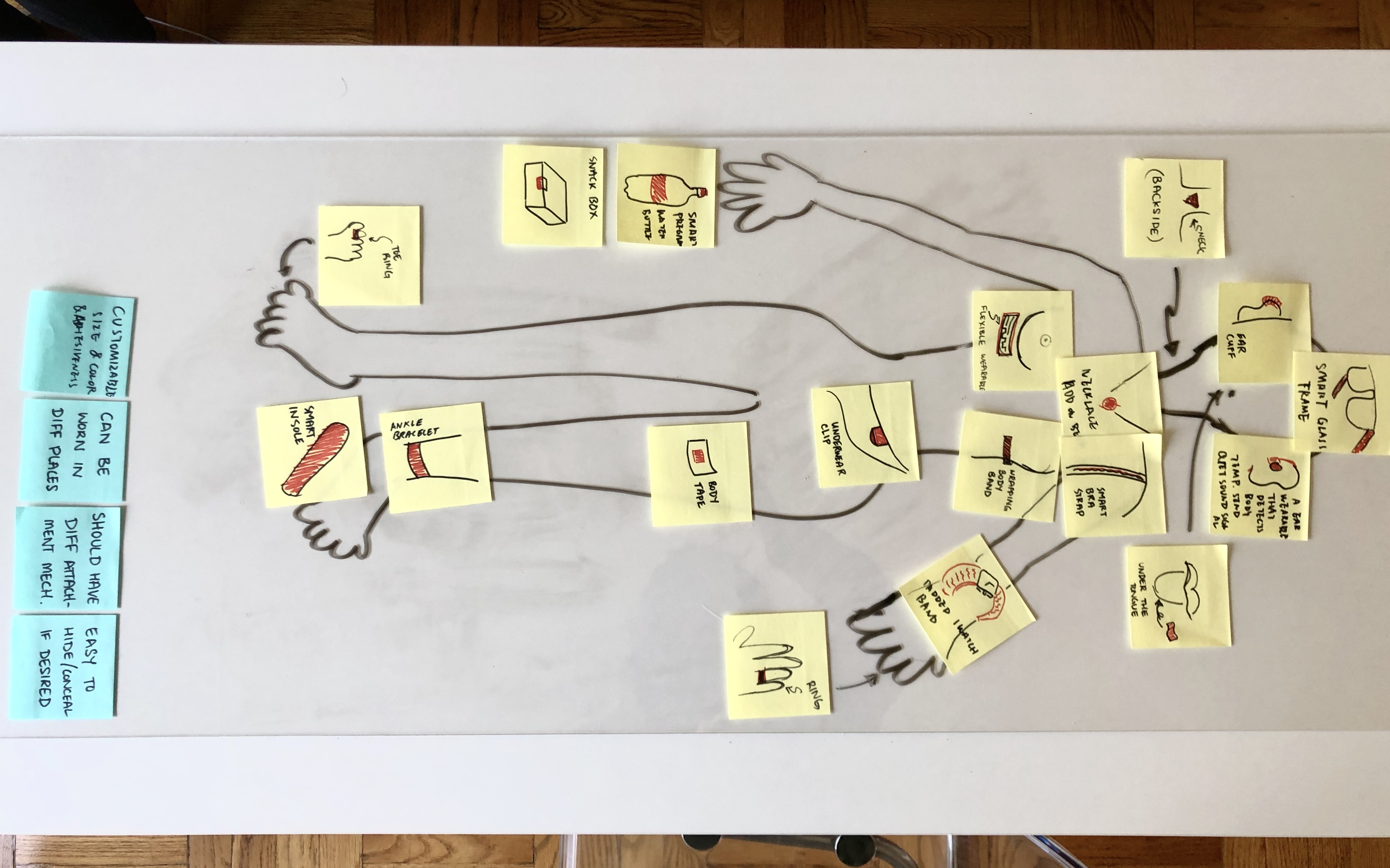
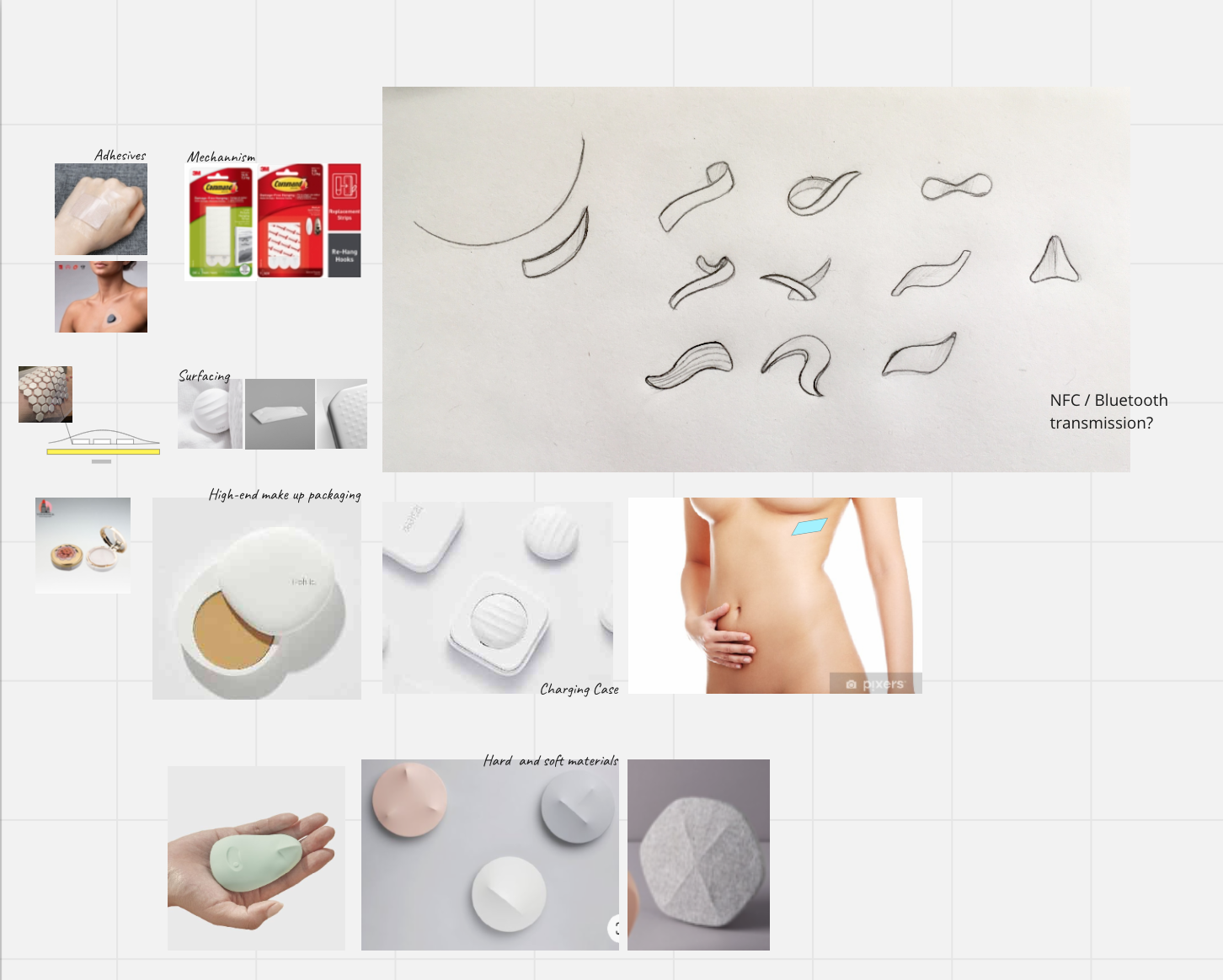
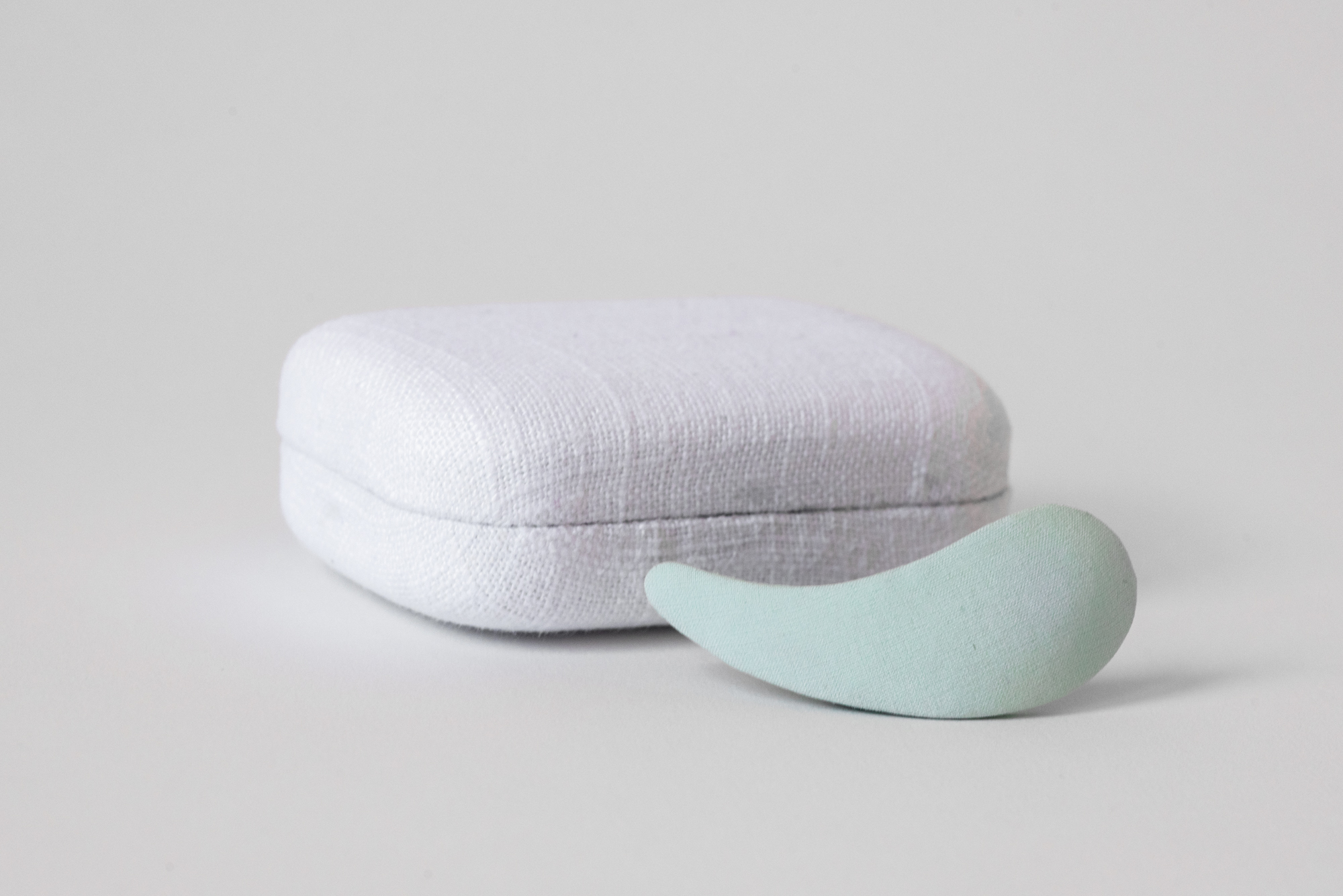

Make Lia Ethical
I led the investigation of the product ecosystem, which includes finding a viable business model, making the wearable service environmentally sustainable, giving users control of their data while making the product accessible and affordable.
Digestible and Anonymous Information

Rather than making our users sift through community forums, which is the status quo right now, we wanted our users to get the information they needed without the fluff.
As such, all data within Lia is anonymous and delivered through optimized suggestions, rather than personal anecdotes.
Agency of Data Sharing
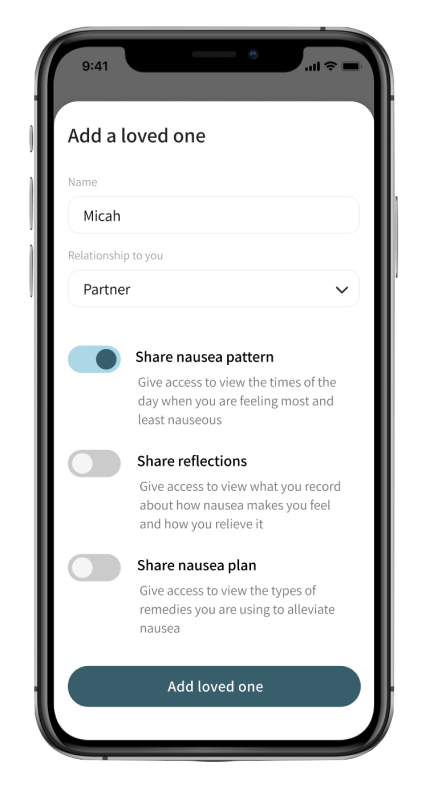
Based on their own preferences, Lia users have control over who they want to share their nausea data with.
The definition of their loved one includes all relationships.
Product Lifecycle
Lia is designed with sustainability and ease of access to a wide population in mind.
When a pregnant person is no longer experiencing nausea, they can send Lia back to be sanitized and distributed to the next person who needs it.

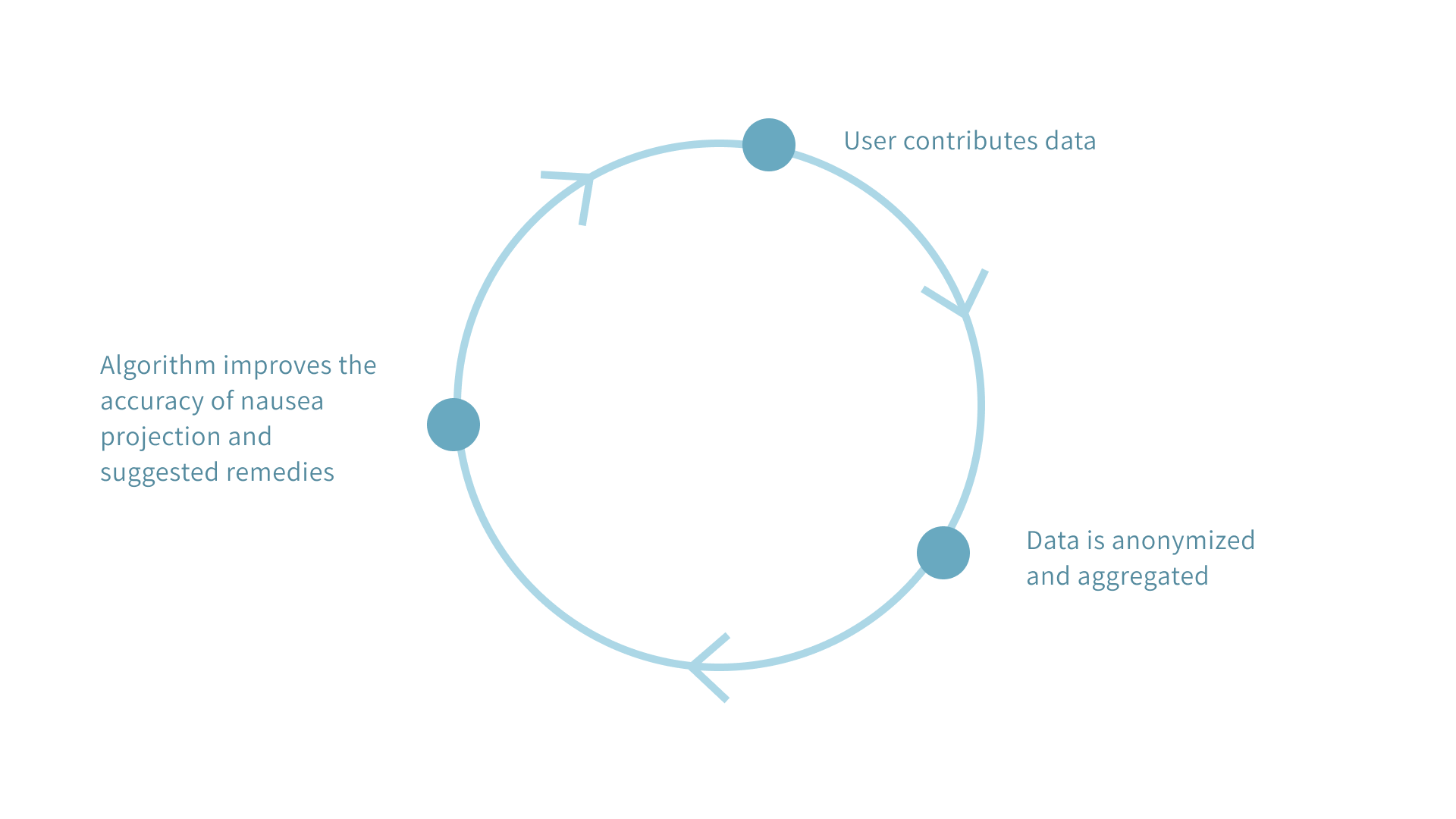
Data Ecosystem
Lack of user data is a key hurdle for medical research institutions to further understand the cause and pattern behind nausea during pregnancy.
Lia users can choose to volunteer their anonymized user data to research institutions to benefit more women in the community by improving Lia service.
Make Lia Actionable
I led the interaction design and UI design of the Lia app, defining use cases with storyboards. I also validated the data viz design and app user flow through user testing.
Define use cases through storyboards
I drew all the storyboards to define the MVP feature of Lia.

This information design graph guided the interaction design and UI design for the Lia app.
Information design
Lia accommodates the type and amount of information people would want to see based on their goals and context.
Data viz design for nausea pattern
Through usability testing, we realized that people care about planning their day with nausea prediction more than over the nausea pattern itself. Therefore, I aligned the nausea pattern visualization with calendar events.



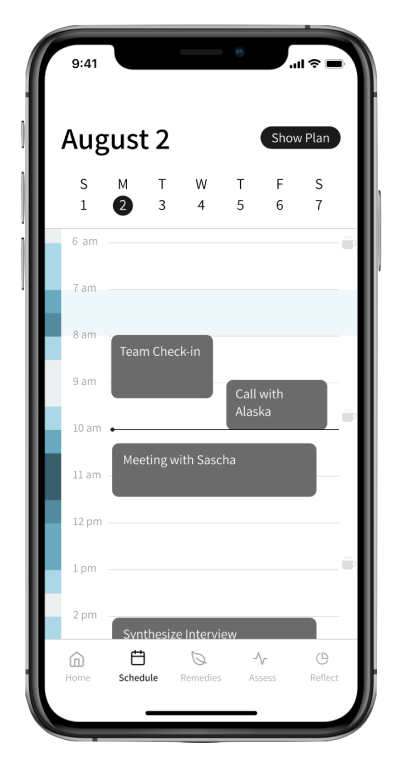
Iterations of data viz design

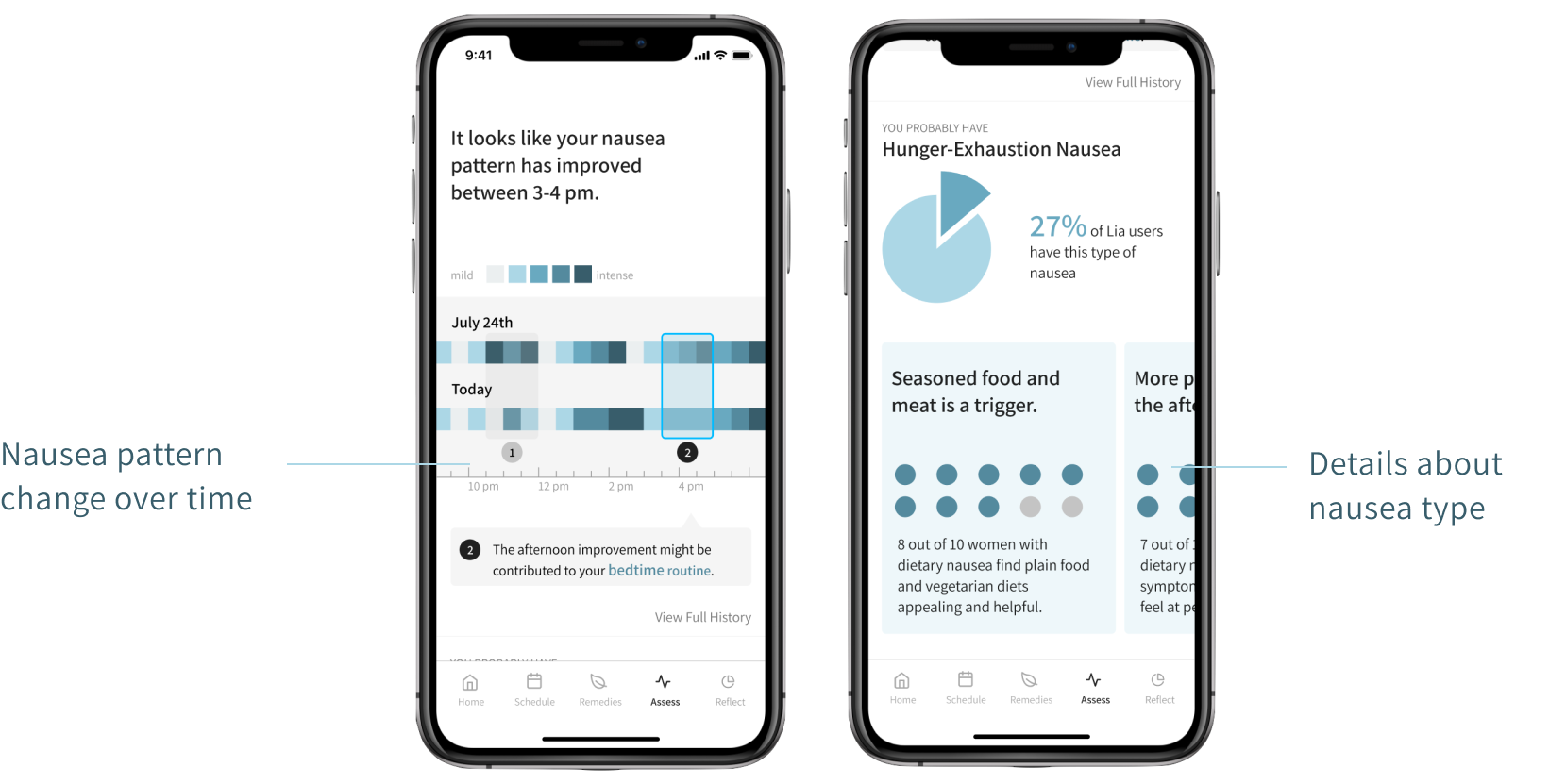
Balance the Tone
Initially, I applied a data-heavy approach to cultivating users’ understanding of their nausea type. However, through user testing, I learned that people don’t have the incentive to go back to a page with static content.
In the final design, I prioritized the dynamic nausea pattern update on the top of the page, and move down the more static diagnosis to the bottom of the page.
05 Future of Lia
Next Steps
1. Validate assumptions of users’ mental models.
2. Talk to pregnancy experts or medical health-tech experts to validate our design for data collection and pattern matching proces.
3. Test Lia’s app interactions with people who might have gonee through nausea.
4. Investigate the viability and desirabily of the business model of Lia.
2. Talk to pregnancy experts or medical health-tech experts to validate our design for data collection and pattern matching proces.
3. Test Lia’s app interactions with people who might have gonee through nausea.
4. Investigate the viability and desirabily of the business model of Lia.

